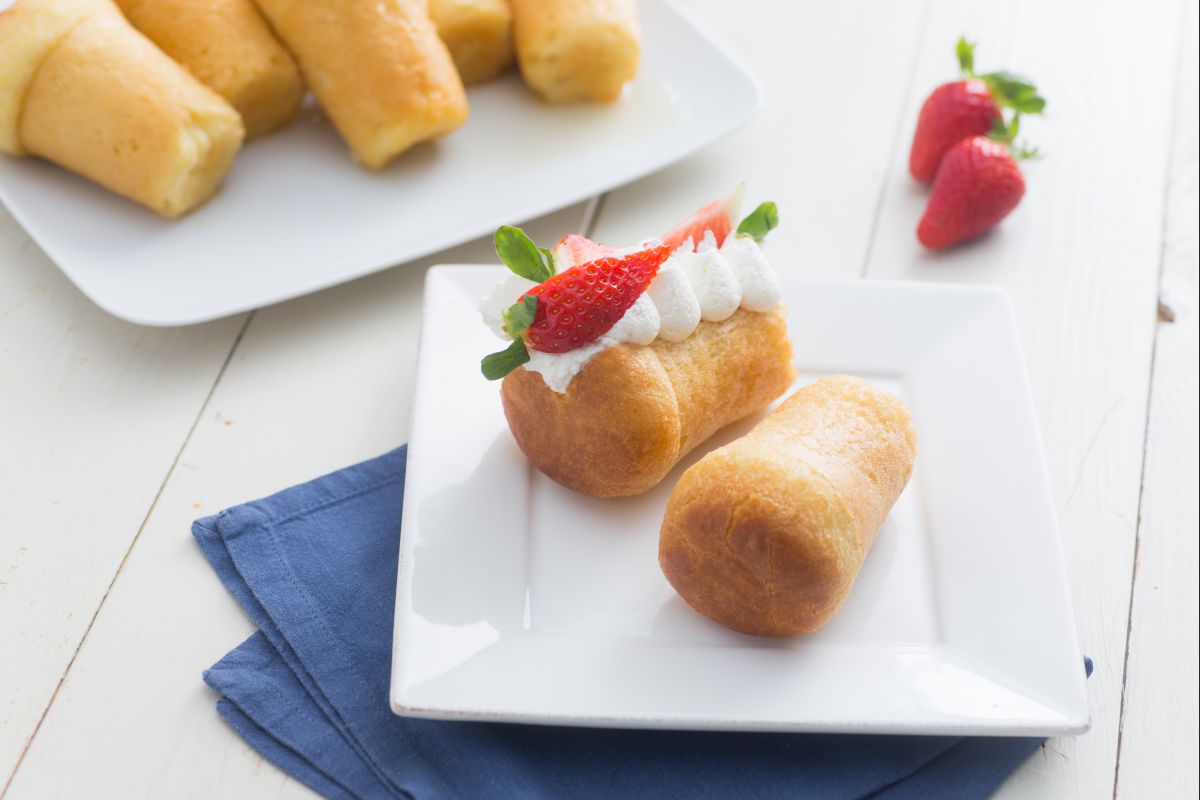Crostata amalfitana (Lemon custard and sour cherry tart)
- Average
- 1 h 20 min
- Kcal 189

It is a typical Neapolitan delight, soft and soaked in an aromatic alcoholic syrup, making it unmistakable... we are obviously talking about the rum baba! Preparing it at home with your own hands is easier than you think: with our step-by-step instructions and a bit of patience for the resting times, you will achieve perfect babas, with a soft and fluffy texture, just like those from the best pastry shops in Naples.
The Neapolitan baba can be enjoyed plain or enriched with whipped cream, custard, and fresh fruit: we offer you a delicious version filled with chantilly cream, strawberries, and mint leaves for an intoxicating aroma.
Ideal as a dessert for special occasions, the rum baba is one of those recipes that encapsulates the essence and tradition of a region and its people... bring its authentic taste to the table and let it win you over!
Discover other must-try Neapolitan pastry specialties:

To prepare the rum babas, start with the dough: pour the Manitoba flour into the bowl of a stand mixer fitted with a paddle attachment 1, then add the crumbled yeast 2 and sugar 3.

Start the stand mixer at low speed 4, then add the eggs a little at a time 5, waiting for them to be well incorporated. Once the eggs are absorbed, add the salt 6 and continue working for a couple of minutes.

Finally, add the butter, a piece at a time 7; slightly increase the speed and make sure it is incorporated evenly. You need to obtain a smooth and homogeneous dough 8. Cover the bowl with plastic wrap and let it rise at room temperature for 3 hours or until it doubles in volume 9.

In the meantime, start preparing the rum syrup: pour the water into a pot 10 along with the sugar 11 and orange peels 12.

Add the lemon peels as well 13, then bring to a boil, stirring to completely dissolve the sugar. At this point, turn off the heat and pour in the rum 14; this will lower the alcohol content. Stir and let it cool slightly 15.

After the dough's resting time 16, take a portion of about 2 oz with a spoon and place it in the appropriate baba molds with a diameter of 2 inches that you have previously buttered, filling them halfway 17. Place the molds on a baking tray and let them rise for about 40 minutes or until doubled 18.

After the rising time, the dough will have doubled in volume 19. Bake in a preheated static oven at 392°F for 20 minutes 20. Once baked, remove them from the mold while still hot. Transfer the babas to a wire rack and let them cool overnight (or at least for 6 hours) 21.

After the resting time, slightly heat the syrup and immerse the babas 22. Let them soak for about 10 minutes, turning them occasionally and ensuring they are not too tight 23. Once soaked, let them drain on a wire rack 24.

In the meantime, you can prepare the chantilly cream: in a bowl, pour the cold cream and powdered sugar 25, then whip with electric beaters 26. When you reach a firm consistency, add the vanilla bean seeds 27.

Gently mix with a spatula 28 to combine 29, then transfer the cream into a piping bag with a 1/2-inch round tip 30.

You are ready for the filling: make a lengthwise cut in the babas 31, then slightly open the incision 32 and pipe in dollops of whipped cream 33.

Garnish with strawberry wedges 34 and fresh mint leaves 35. Your rum babas are ready to be enjoyed 36!